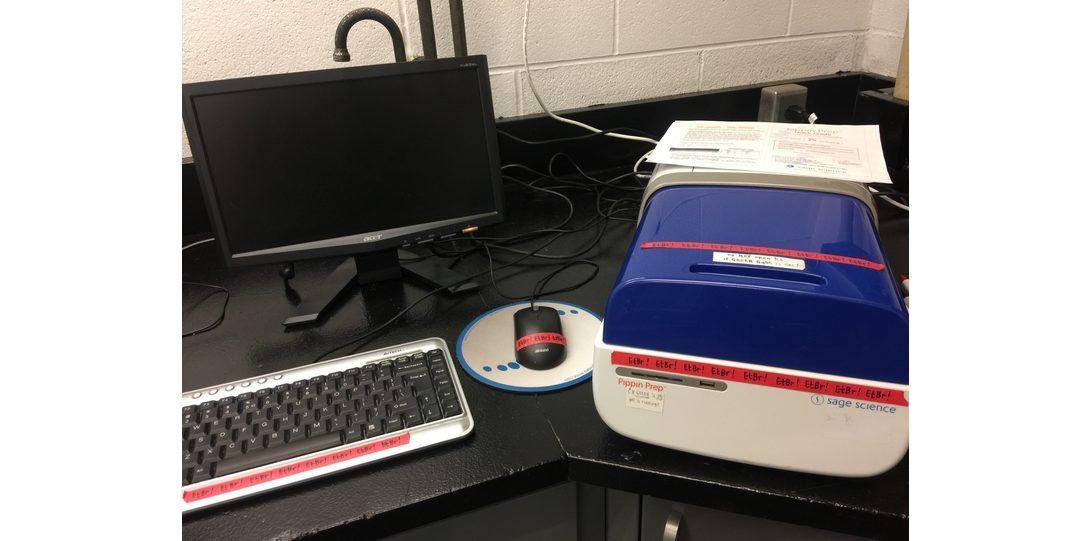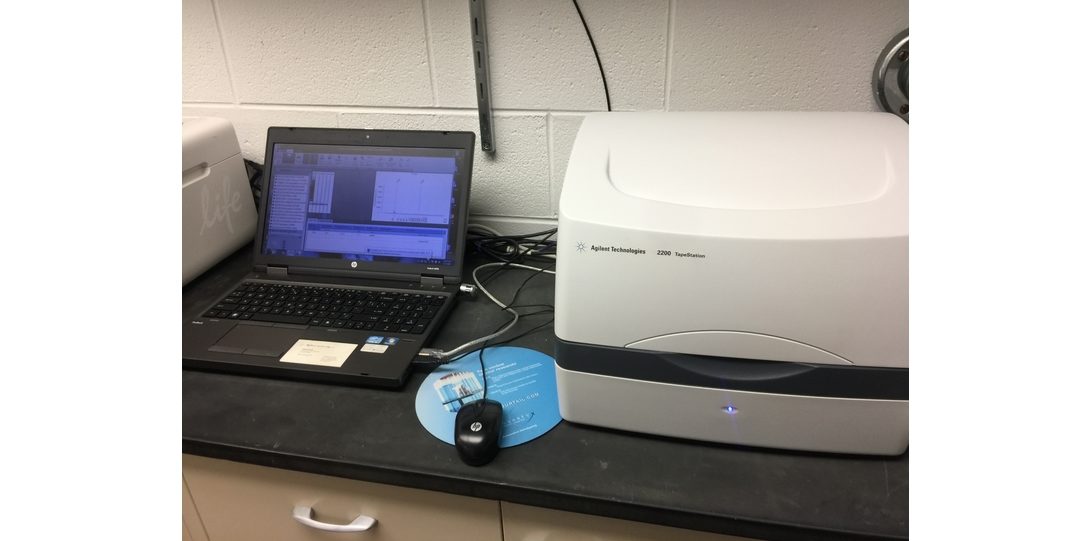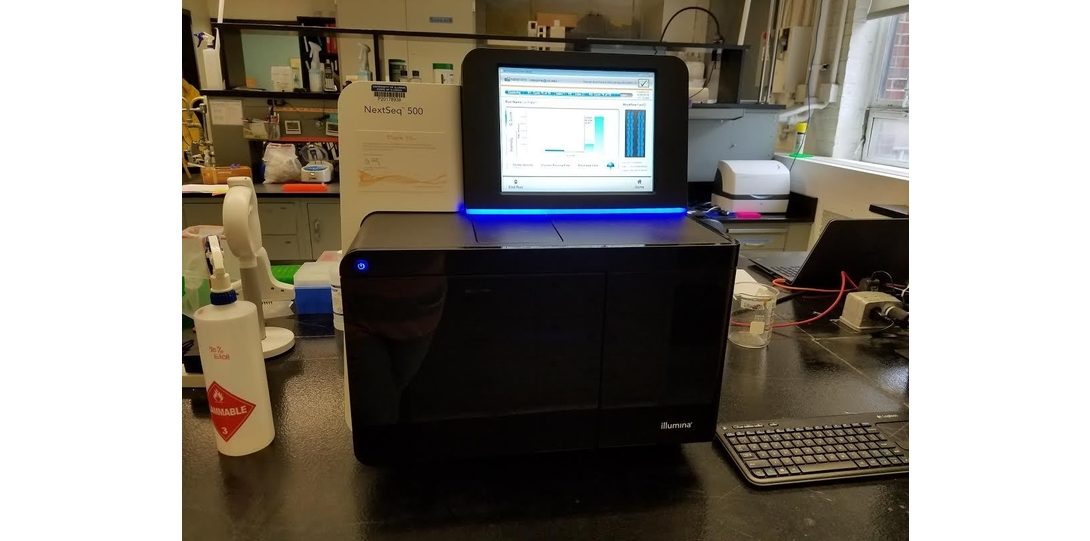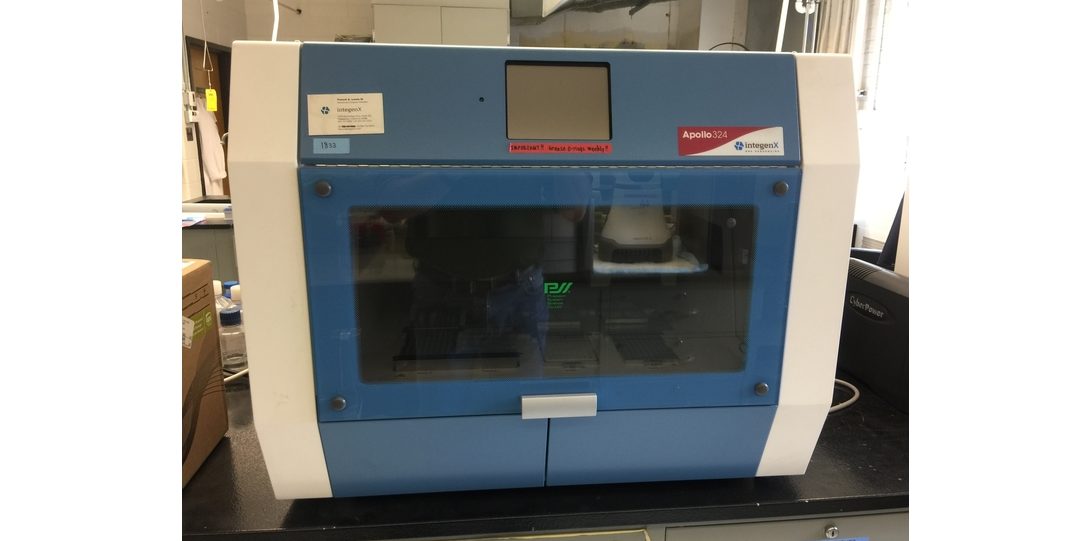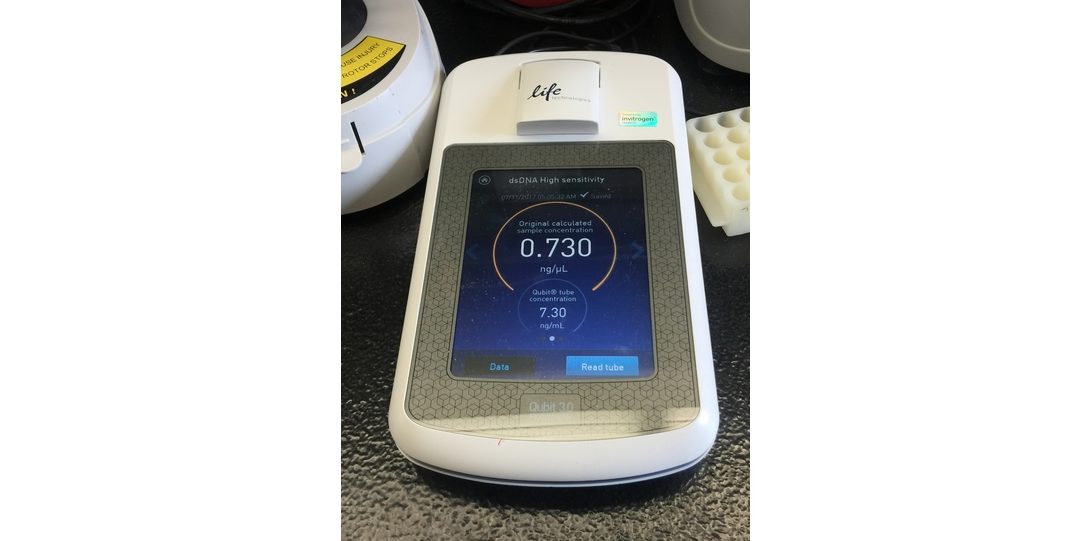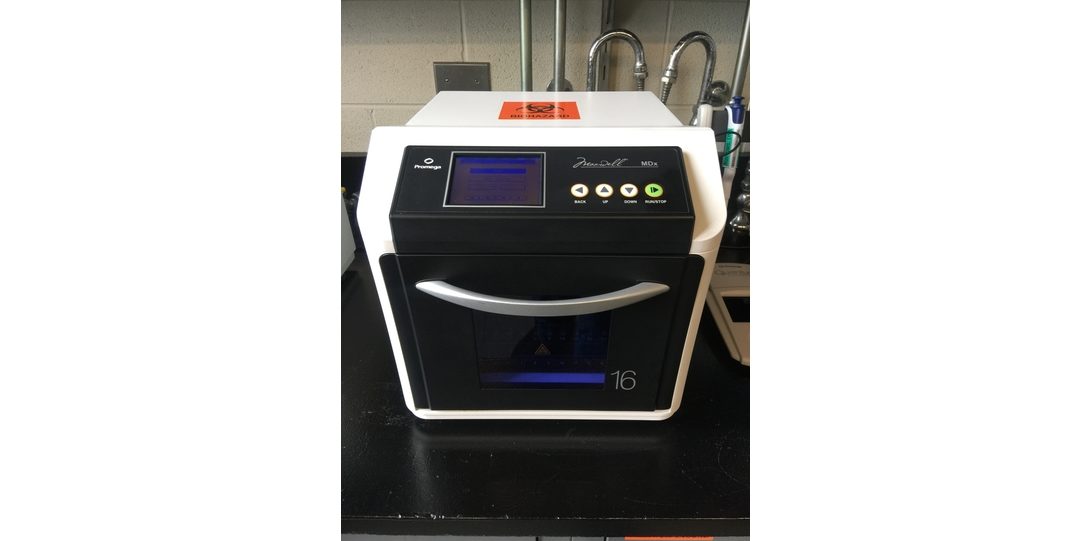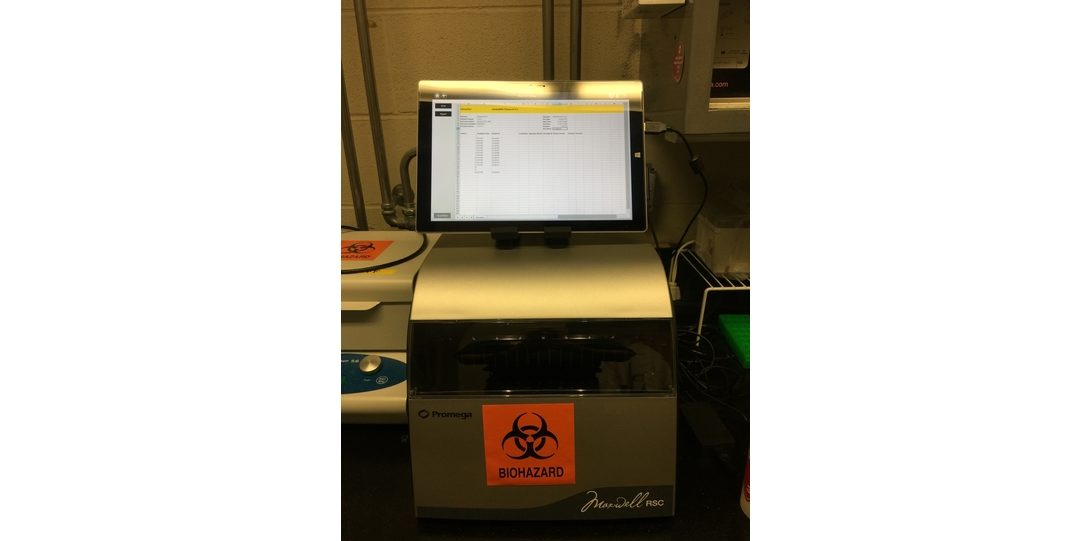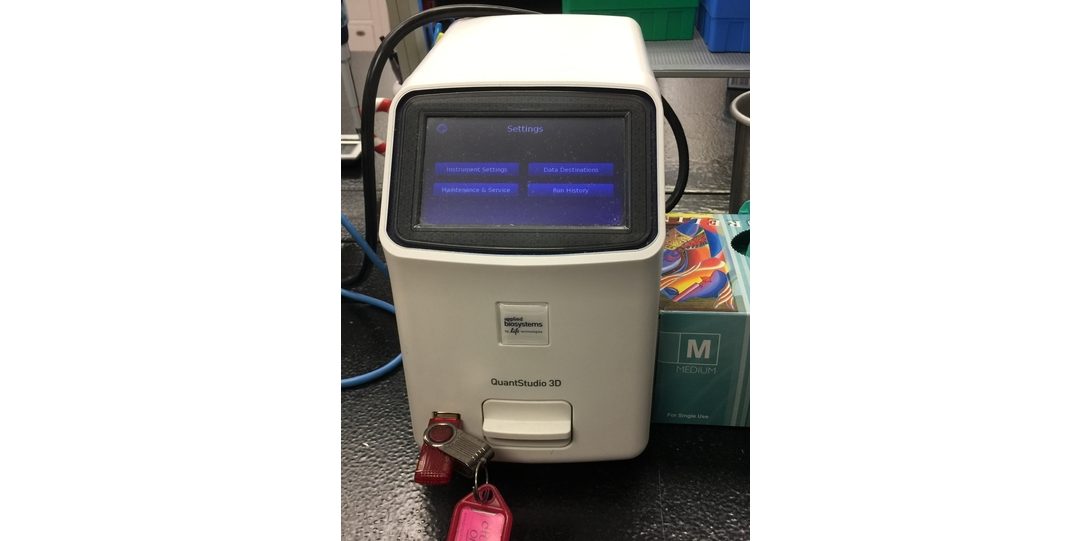Instruments
Introduction
The Sequencing Core maintains a number of instruments for customer use, as well as equipment for preparation and sequencing of next-generation sequencing libraries. Contact SQC staff to gain access to instruments or to drop off samples for processing and analysis.
Instruments for Customer Use
- Covaris S2 acoustic shearing device – The Covaris is a sonicator that is used to accurately shear DNA to specified fragment lengths. Heat-damage to the samples is also minimized by use of an associated cooling system. The S2 system is used for shearing of nucleic acids after cross-linking for chromatin immunoprecipitation (ChIP) sequencing. In addition, the system is used to shear genomic DNAs prior to preparation of standard NGS libraries. The system is low-throughput – 1 sample at a time – but can be adjusted to select for different size distributions.
- Life Technologies 7500Fast Real-time PCR system – The 7500 instrument can only use 96-well ‘fast’ plates (shallow depth, low volume). The system is calibrated for FAM, VIC, ROX, SYBR Green, TAMRA, and NED dyes.
- Life Technologies Viia7 Real-time PCR system – The Viia7 system has exchangeable blocks, and can be used for standard 96- (deep well), fast 96- (shallow well), and 384- well plates. The system is calibrated for FAM, VIC, ROX, SYBR Green, TAMRA, and NED dyes. Do not attempt to change blocks until you have been trained on the system.
Reagents and consumables for real-time PCR are sold in the SQC facility (Room A-310, CMWT). These include 96-well and 384-well plates, optical covers, SYBR green and Taqman mastermixes. Purchases of reagents is conducted through the 4D system utilized by the Scientific Supply Center (SSC) and is linked to customer RRCANs.
Instruments Operated by SQC Staff
- Sequencers
- Life Technologies 3730xl Analyzer – for Sanger sequencing, fragment analysis and STR analysis.
- Illumina NextSeq500 – High-output, next-generation sequencer. Maximum read-length – paired-end 2×150 base sequencing. High-output flow cell produces 400 M clusters, generating up to 120 Gb of sequence data per run.
- Illumina MiSeq – Next-generation sequencer for amplicons. Maximum read-length – paired-end 2×300 base sequencing. High-output flow cell (V3) produces up to 25 M clusters (much lower for amplicons), generating up to 15 Gb of data.
- Illumina MiniSeq – Next-generation sequencer for amplicons and library quality control. Maximum read-length – paired-end 2×150 base sequencing. Mid-output flow cell produces up to 8 M clusters, generating 2.4 Gb of data. The high-output flow cell produces up to 20 M clusters, generating 6 Gb of data.
- Oxford Nanopore MinION – Long-read next-generation sequencer. No maximum read-length. Can generate from 1-10 Gb per run, with initial data generated within minutes of starting the sequencer. Used for genome assembly; high error rate precludes use for genotyping.
- Instrumentation for NGS Library Preparation and Nucleic Acid Quality Control
- Sage Scientific Blue PippinPrep – for automated size selection of DNA fragments
- Agilent TapeStation 2200 and 4200 – for automated qualitative and quantitative analysis of DNA and RNA samples
- Life Technologies Qubit – for DNA/RNA quantification
- Instrumentation for Nucleic Acid Extraction
- Bullet Blender & FastPrep – sample homogenizing (bead-beating)
- Promega Maxwell 16 – Automated DNA and RNA extraction robot
- Promega Maxwell RSC – Automated DNA and RNA extraction robot
- Qiagen EZ1 – Automated DNA and RNA extraction robot
- QIAcube – Automated DNA and RNA extraction robot
- Instrumentation for quantitative analyses
- Biorad QX100 Digital PCR System – quantitative PCR analysis without real-time. Ideal instrument for absolute quantification without a standard curve or for detection of very minor alleles in mixed nucleic acid samples.
